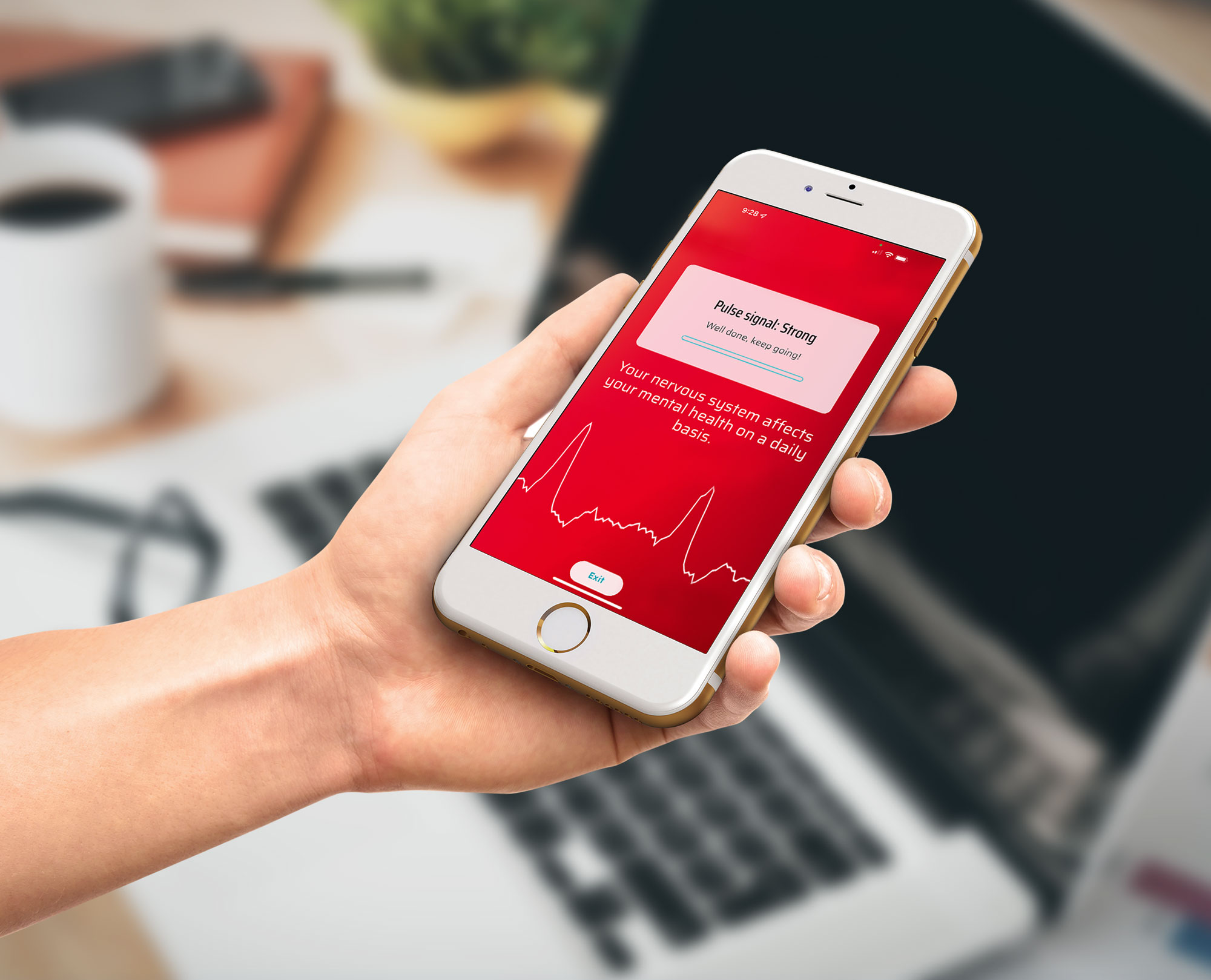By Melissa Frieswick on Mon, Jan 31, 2022
Stress has always been a factor in the workplace, and some measure of that can be good. When we're under stress, our sympathetic nervous system kicks into gear, providing a boost of cortisol and adrenaline and a higher heart rate that allows us to be hyper-alert and get things done quickly and efficiently.
However, our bodies were not meant to reside in a high-stress state. When the threat (or deadline, presentation, project) has passed, we must be able to return to a more relaxed state governed by our parasympathetic nervous system. Our heart rate slows, our minds clear and we're able to be more creative, collaborative, and calm.
The ability to toggle between high and low heart rate states is a sign of adaptability and good health. It's measured via heart rate variability, and thanks to tools like Total Brain's Resonant Breathing with HRV, workers can measure their HRV quickly, even at work, to determine their current stress level in comparison to others with the same age and gender, and take steps in the moment to better manage their stress and improve their overall well-being.
What HRV Tells You
As its name implies, heart rate variability measures the variation between fast and slow heartbeats. Faster heartbeats indicate more stress, fear, or excitement. Slower heartbeats indicate low stress, calm, and flexibility. We need the ability to enter "fight-or-flight" mode when necessary (run from that grizzly bear!) while allowing our bodies to "rest-and-digest" when things are safe.
The problem comes when we get stuck in fight-or-flight mode for long stretches of time. The sympathetic nervous system puts a brake on non-essential functions so we can address the threat at hand, but that puts more stress on the heart and other organs; hampers clear, flexible thinking needed to make decisions; and prevents our bodies and brains from recuperating through rest and sleep.
As explained by Heidi Hanna, M.D., best-selling author and chief energy officer of Synergy Brain Fitness, in a recent Total Brain podcast, "The acute stress reaction tends to be more helpful, enhancing our focus and attention. But it's the more chronic, ongoing, lingering type of stress reaction that causes most of the damage."
By measuring HRV at various times during the day, we can become more attuned to our state of being and then use that knowledge to incorporate stress reduction techniques and learn healthier habits. You can also measure your HRV at the same time every day to establish a baseline reading.
Stress reduction at work
Taking the example of a worker under a tight deadline, the individual can use our Resonant Breathing with HRV digital exercise to measure and mitigate stress. Once the deadline has passed or during a break, he or she can simply access the tool on the Total Brain app and follow the instructions provided to place a finger over the phone camera lens to produce a reading.
Resonant Breathing measures the individual's HRV and positions the user into one of four stress levels: stressed, strained, composed, or relaxed, based on how their HRV compares to a similar population. If HRV is low, Total Brain breathing and meditation exercises can help guide the user into a more relaxed state. For instance, taking a few slow, measured breaths (ideally a rate of about six breaths per minute) can work wonders accessing the parasympathetic nervous system and reducing the cortisol and adrenaline flow. A few minutes of mindfulness meditation – closing the eyes and tuning into the sounds and smells around you – also does the trick.
The Total Brain app offers workers tools they can use in the moment to practice resonant breathing or mindfulness. For those able to listen to music while at work, Total Brain's Neurotunes use neuroscience-inspired music and soundscapes to reduce anxiety and stress.
When the worker finishes the calming exercise, they can view the before and after measurement to see immediate impact. The employee also can access these tools easily at home to relieve stress and practice healthy habits after work, before bed or first thing in the morning.
Less stress, better workers
Many employers may appreciate having workers revved up and working fast. It can drive productivity and efficiency during a busy season. However, that mode is not sustainable long term. Over time, stress will lead to health problems like high blood pressure, mental health problems like depression and anxiety, and burnout that leads workers to miss work or leave the job entirely.
By giving your employees tools to take control of their stress and manage it for optimum productivity using HRV measurement and stress reduction practices, you'll achieve the best results for both your company and employees. Contact us for a free demo of Total Brain's platform, including the Resonant Breathing tool with HRV.




comments